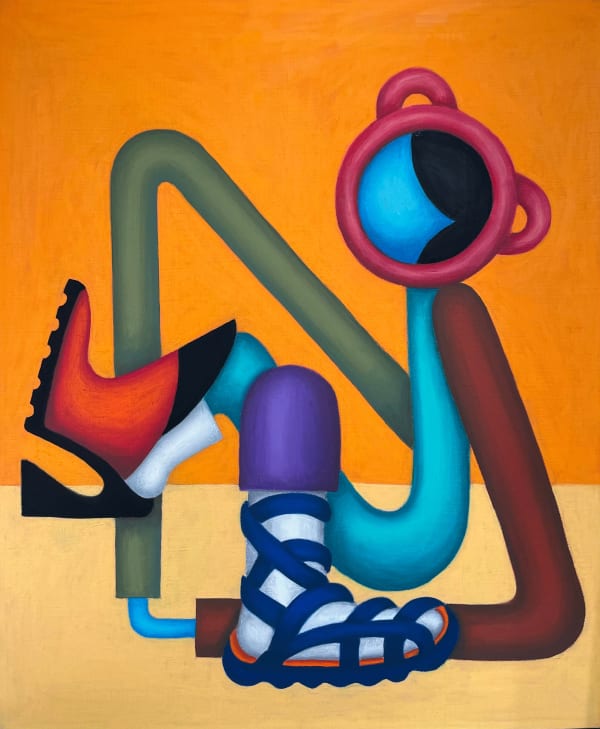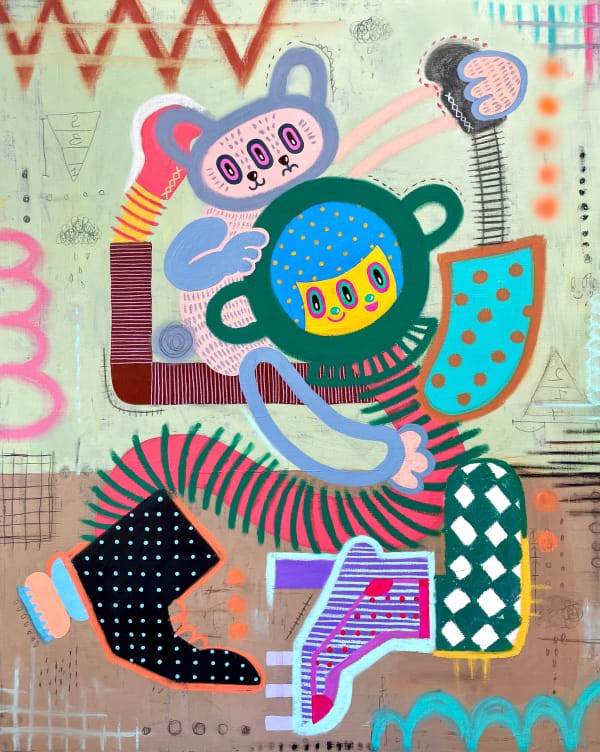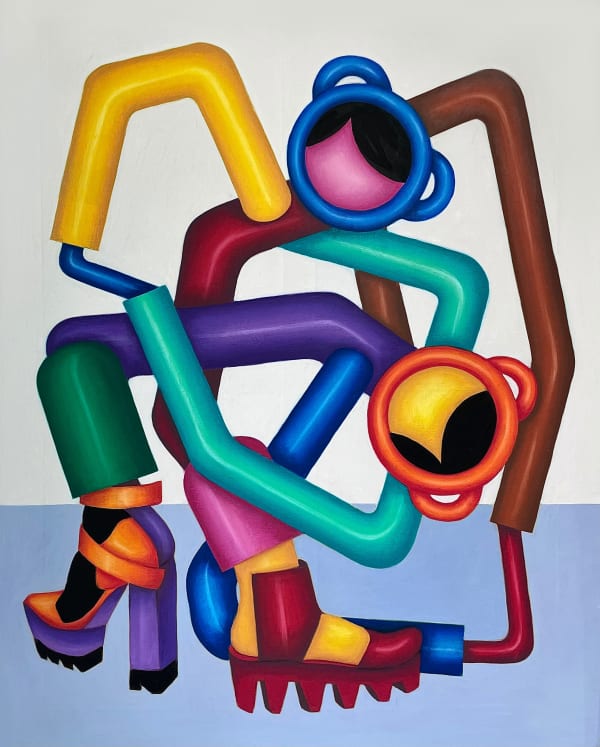HERO: Group Exhibition
RHODES Contemporary Art is delighted to announce a new group exhibition HERO, featuring four East Asian artists whose works depict repeating characters – heroes.
While all the represented artists take completely different approaches to their heroes and themes, there is a distinct influence of East Asian traditions of cartoon characters and kawaii aesthetic reappearing in different interpretation, styles and medium.
Kawaii can be translated as ‘cute’ or ‘adorable’ and over the past decades has become a cultural phenomenon that captured global imagination, establishing itself as a distinct part of East Asian, and particularly Japanese, cultural identity. Initially started as a ‘cute handwriting’ pioneered by Japanese teenagers in 1970s, the trend rapidly grew in popularity, and soon has been integrated into popular culture, mass production and character designs. In HERO, different artists take their inspiration from the kawaii aesthetic and culture surrounding it and interpret in a way that feels the most authentic to them and their own heroes.
Yool Kim is a Seoul-based artist, who navigates and explores the ideas of identity and subconsciousness in her mixed-media artworks. Through a variety of bright mixes of colours and mediums, distorted shapes, disorderly and chaotic body movements, Yool tries to capture and convey everything she feels in life: from her thoughts and emotions to people she encounters, and relationships she forms with them.
Yool’s maximalist approach expresses a series of fast-paced thoughts and emotions, flowing and overlapping, coming together in a chaotic mix that represent personal yet almost universal human experience. Among diverse bright colours, patterns of dots, stripes and diamond-shaped grids appear playful cartoonish faces with distinct set of three eyes, two button-like noses and a pair of two small mouths – they, as Yool explains, highlight self-expression and inner thoughts that, unlike her physical body, have not matured yet and are stunted in growth. Two mouths are the only indicators of emotions and often represented them differently – reminiscing about ambiguity.
This theme of dual perception of the world and oneself placed within it lies at the very core of Yool’s works, often directly engaging in a visual discourse about the relationship with other people, how they see her and the way it contrasts with or informs how she looks at herself; the way she is and the way she wants to be – ‘small but confident’.
Similar ‘shifting’ emotions and invisible ‘stimuli’, felt in daily life, are represented in the nameless protagonists of a Japanese artist Takumi Tsuchida. The soft curved shapes of their bodies and garments, complemented by a deep blues and greens make the artworks both, peaceful and melodic.
Tsuchida’s heroes are instantly recognisable: flowing ponchos, fluffy hair, and straw hats, wandering around dream-like night-time landscapes. However, Tsuchida pays a particularly close attention to guitars that appear unique and different in every work, being the metaphorical centres of every composition. This focus on instruments is inspired by strong figures like a gunslinger travelling around the Wild West, a bluesman walking with a single acoustic guitar on his back, a blind woman playing a shamisen and singing – all visualized by Tsuchida. On the contrast with the detailed depiction of the instruments, the simplistic approach to characters’ facial features feels universal, symbolising not only the skilled heroes, Tsuchida admires, but also the idea that anyone can experience the personal connection and find a part of themselves within these wandering musicians.
Resemblant kawaii-influenced approach to the character design appears in the melancholic big-eyed people and anthropomorphic animals of Chuzu Wada – a Japanese painter and manga artists. Her moon-faced, soft heroes are inspired by the traditional Japanese manga style: their simplified features draw the viewers’ attention to the enlarged eyes, evoking the sense of gentle sadness and melancholy that speaks directly to a natural ‘kawaii’ response.
Combined with a delicate pastel palette choice, whether static or caught in motion, alone or together, Chuzu’s characters looking out on the viewers, calm and friendly.
Similarly, UK based artist Nomiss has blended the kawaii aesthetic into their works, creating their iconic hero of the girl. The girl motif is playful, hopeful, an ageless anonymous character. Although the girl character is always repeated, Nomiss plays with colour palettes and tones, so no two paintings are the same. Each colour way creates a different mood, from a playful pink to a tranquil green. The girl is always the hero, always the protagonist.
On the contrast, Tokyo-based artist Zoe presents the audience his psychedelic pop art canvases: loud, full of explosive neon-coloured abstract backgrounds and diverse cartoon-like characters, inspired by Garbage Pail Kids, a series of sticker trading cards, inhabiting and even merging with into them. His recognisable one-eyed creatures depicted in the middle of a chaotic action, with small perfectly round circles for cheeks and tongues out, evoking a sense of hand-draws 2D animation.
Ultimately, while all represented artists engage with their own prominent styles, themes, and protagonists, coming together in the HERO group show, they the viewers to join in in the playfully colourful and softly melancholic worlds, influenced by the East Asian pop culture traditions and meet all the unique heroes inhabiting them.





